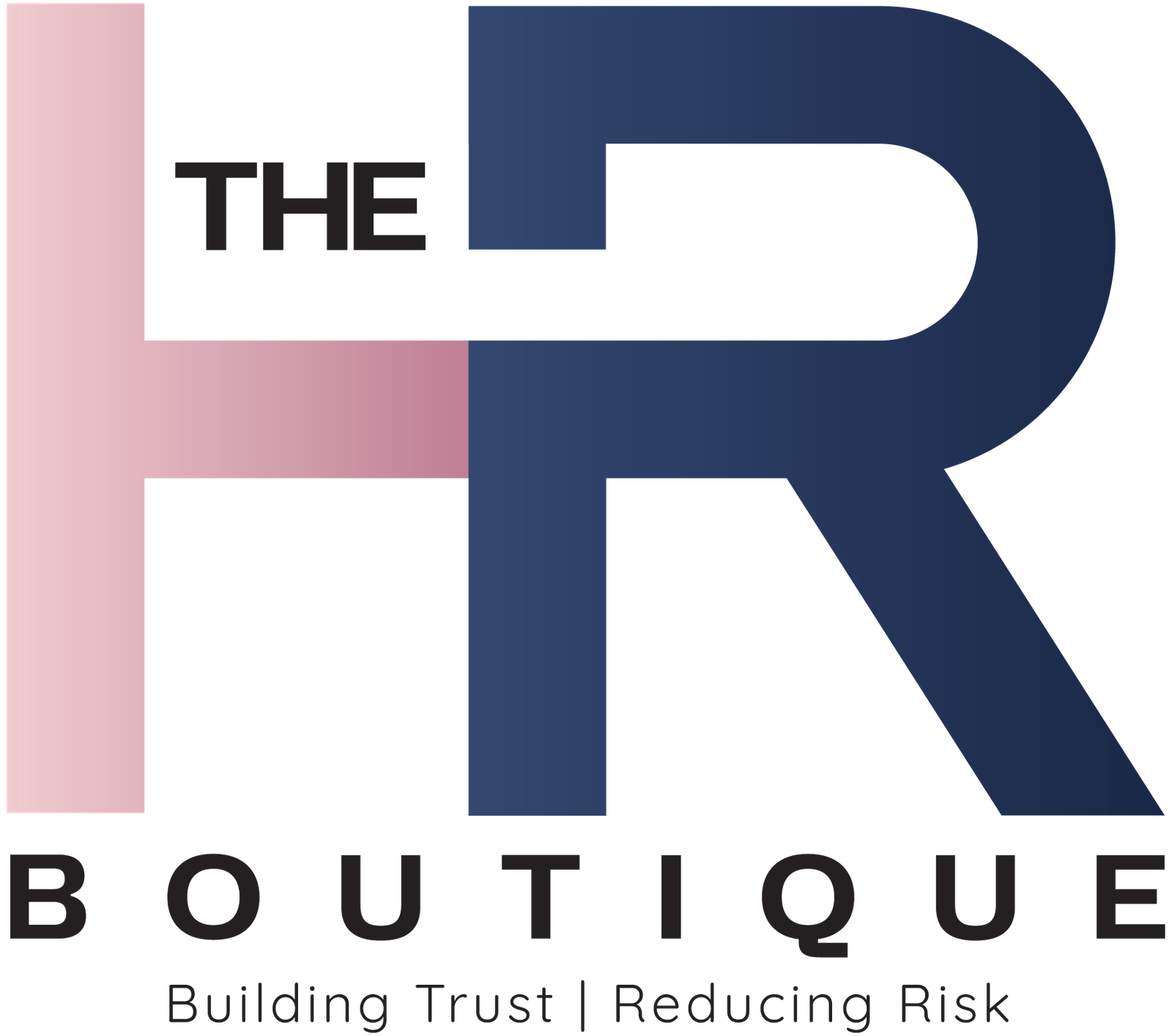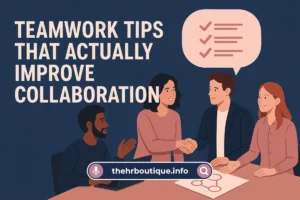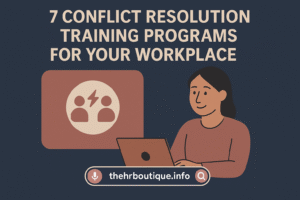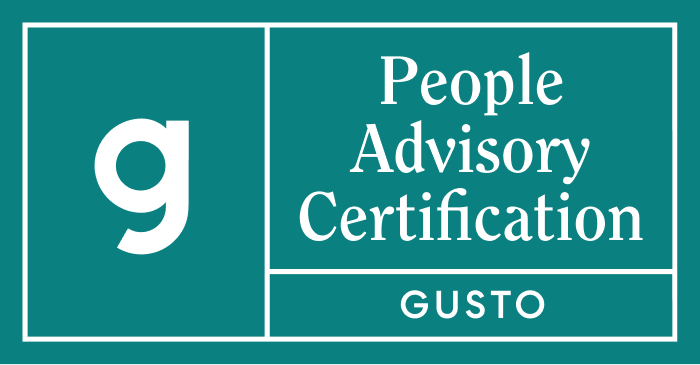Running a small business means every hire, every policy, every email matters. HR advice for small businesses isn’t optional anymore. Turnover costs 50-200% of an employee’s salary to replace them, compliance fines stack up, and morale can tank fast.
You’ll also get to know practical HR steps that help you hire better, onboard well, stay compliant, retain your people, and scale without chaos.
Why HR matters for small businesses
For many founders HR feels like overhead until it isn’t. But the ROI of doing HR right shows up fast: speed & quality of hiring improves, retention goes up, legal risks go WAY down, and productivity increases.
When you take too long to hire you lose candidates; when you onboard poorly you lose people; when you ignore contracts you risk fines. For example, a 5-person tech startup I know avoided a lawsuit by getting legal-grade contractor agreements and basic employee contracts after a consultation; the cost of that advice was under $500, but avoided a potential claim of thousands.
Stat: replacing an employee can cost a business between 50-200% of that employee’s salary.
Why Ignoring HR Could Bankrupt Your Small Business
Ignoring HR costs seems small until they compound. High turnover drains time, money, and energy. The hiring costs (ads, recruiter fees), onboarding, low productivity while the role is vacant, mistakes from unclear policies, plus the risk of compliance fines.
Small businesses that overlook contracts or worker classifications may face legal penalties. The intangible costs include demoralized team, poor reputation, loss of institutional knowledge that can hit hard.
In many industries replacing someone costs 1× their annual salary or more when you include training, recruiting, and lost productivity.
How Smart Companies Turn HR Into Their Secret Growth Engine
Professional HR advice transforms HR from a line on expenses into a multiplier of output. When hiring is structured, you get a better fit faster. When onboarding is solid, people “ramp up” quicker.
When feedback loops exist, problems are caught early, not after they blow up. HR creates a way for consistency and every new person gets the same clear expectations, every team member knows where they stand.
Having an HR can help build trust that boosts retention. Which means you spend less time rehiring and more time growing. In effect, HR becomes the infrastructure that lets you scale without scaling chaos.
HR Areas Where Small Businesses Need Professional Help
These HR domains make a real difference when supported with good advice. Here are actionable areas plus small-checklist items you can begin this week.
Hiring & Recruitment Processes
Define a job description (JD) template with outcomes + behaviours, not just “must haves.” Use structured interviews: same 3-5 questions per candidate, score responses.
For example: “Tell me about a time you solved a problem under tight constraints,” or “How do you give/receive feedback?” Use a simple applicant tracking system (ATS) or shared spreadsheet to track stages and avoid losing candidates.
Checklist: finish one JD this week; set interview schedule; evaluate one candidate using the structured questions.
Onboarding & first 90 days
First impressions matter. A 30/60/90 plan gives new hires visibility on what to learn, when, and how success is measured. Include zero-day prep (equipment, accounts ready), week one check-in, end of month 1, 60, 90 reviews.
Rituals: team welcome lunch or virtual intro, assign a buddy, daily check-ins early, feedback at each 30-day mark. These increase retention because someone feels supported from the start.
Checklist: send welcome packet; assign buddy; schedule 30/60/90 review dates.
Performance Management & Feedback Loops
Don’t wait for the annual review. Hold weekly or biweekly 1:1s with direct reports: discuss what’s working, what’s stuck, what support they need. Set one measurable goal per quarter for each person, revisit it in those 1:1s.
Give informal feedback frequently. Use short reviews twice a year even if informal—helps catch issues early, adjust course. Transparent expectations = lower frustration.
Checklist: set first quarterly goal; schedule recurring 1:1; design feedback template.
Employee Development & Upskilling
Upskilling doesn’t need a big budget. Use online micro-courses, peer-sharing sessions, internal lunch-and-learns. Encourage people to set personal development goals.
Ask “what skill would help you most this quarter?” Support reading, mentorship. For remote/hybrid, allocate a small stipend for skills training. Motivated people stay longer, contribute more.
Checklist: identify one skill per person, budget for one course, plan peer session.
Payroll, Contracts & Compliance Basics
Make sure every worker has a signed contract. Check classification (employee vs contractor) under local law. Set up payroll correctly: withholds, taxes, benefits.
Keep accurate records (hours, leaves, paid time off). Stay up to date posters/regulations. Use contract templates or legal review. Avoid assuming software handles everything—you still need policy, consistency, and awareness of local/regional laws.
Checklist: review one contract; verify classifications; confirm timekeeping process.
Culture, Values and Remote/Hybrid Policies
Culture isn’t fluffy: it shapes how work gets done, how people stay. Define values clearly; write them, live them.
For remote/hybrid teams, set rituals: regular all-hands, virtual coffee, core overlap hours, clear communication norms. Recognize behavior that aligns with values. Celebrate small wins. Ensure remote employees feel included in decision making.
Checklist: draft or revisit values; set one culture ritual; define remote norms.
How HR Advice Reduces Turnover & Boosts Productivity
With the help of professional HR services, turnover drops and productivity rises. Better hiring → folks who fit stay longer. Good onboarding → new hires ramp faster, contribute sooner. Regular feedback → fewer surprises, less frustration.
For example, a boutique marketing agency with 12 people improved retention by 40% over a year after implementing structured interviews, 1:1s, and a 30/60/90 onboarding plan. That meant fewer rehiring costs, less time lost waiting for someone to replace someone, and happier clients because work was more consistent.
Track metrics: turnover rate (how many employees leave annually), time-to-hire (days from JD posted to accepted offer), productivity per role (outcome vs expectation). These help you measure whether your HR changes are working.
The Bottom Line
Growth exposed without compliance is dangerous. Some cheap, low-effort steps protect you from big risk: use written employment contracts, record hours worked, maintain leave & overtime logs, ensure local required labor law posters are displayed, keep contracts for independent contractors reviewed, document policies for harassment, benefits, termination.
If you want professional HR services and support, contact us on our website today.





